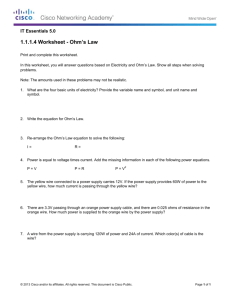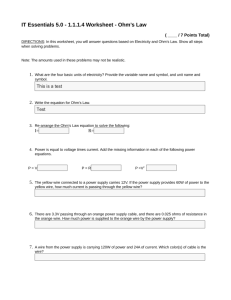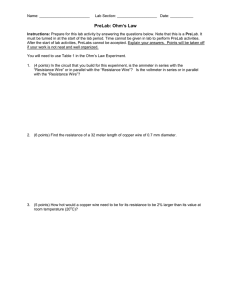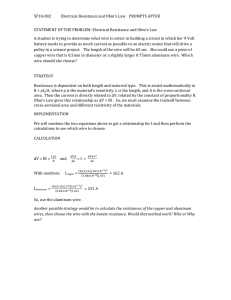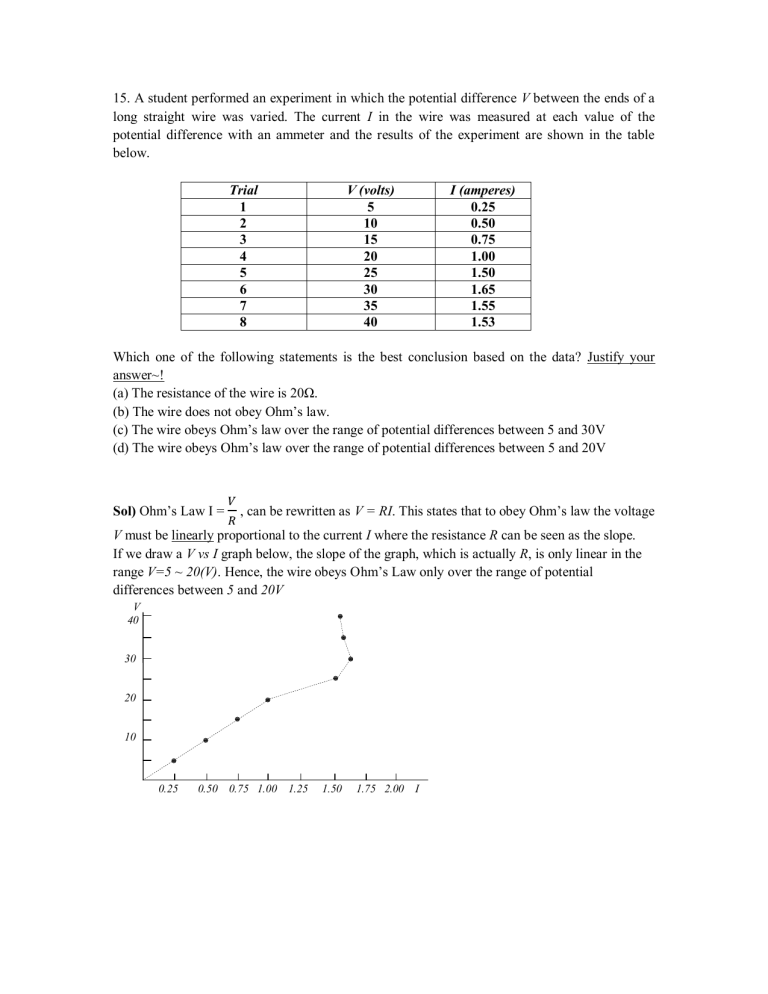
15. A student performed an experiment in which the potential difference V between the ends of a long straight wire was varied. The current I in the wire was measured at each value of the potential difference with an ammeter and the results of the experiment are shown in the table below. Trial 1 2 3 4 5 6 7 8 V (volts) 5 10 15 20 25 30 35 40 I (amperes) 0.25 0.50 0.75 1.00 1.50 1.65 1.55 1.53 Which one of the following statements is the best conclusion based on the data? Justify your answer~! (a) The resistance of the wire is 20Ω. (b) The wire does not obey Ohm’s law. (c) The wire obeys Ohm’s law over the range of potential differences between 5 and 30V (d) The wire obeys Ohm’s law over the range of potential differences between 5 and 20V Sol) Ohm’s Law I = , can be rewritten as V = RI. This states that to obey Ohm’s law the voltage V must be linearly proportional to the current I where the resistance R can be seen as the slope. If we draw a V vs I graph below, the slope of the graph, which is actually R, is only linear in the range V=5 ~ 20(V). Hence, the wire obeys Ohm’s Law only over the range of potential differences between 5 and 20V V 40 30 20 10 0.25 0.50 0.75 1.00 1.25 1.50 1.75 2.00 I


